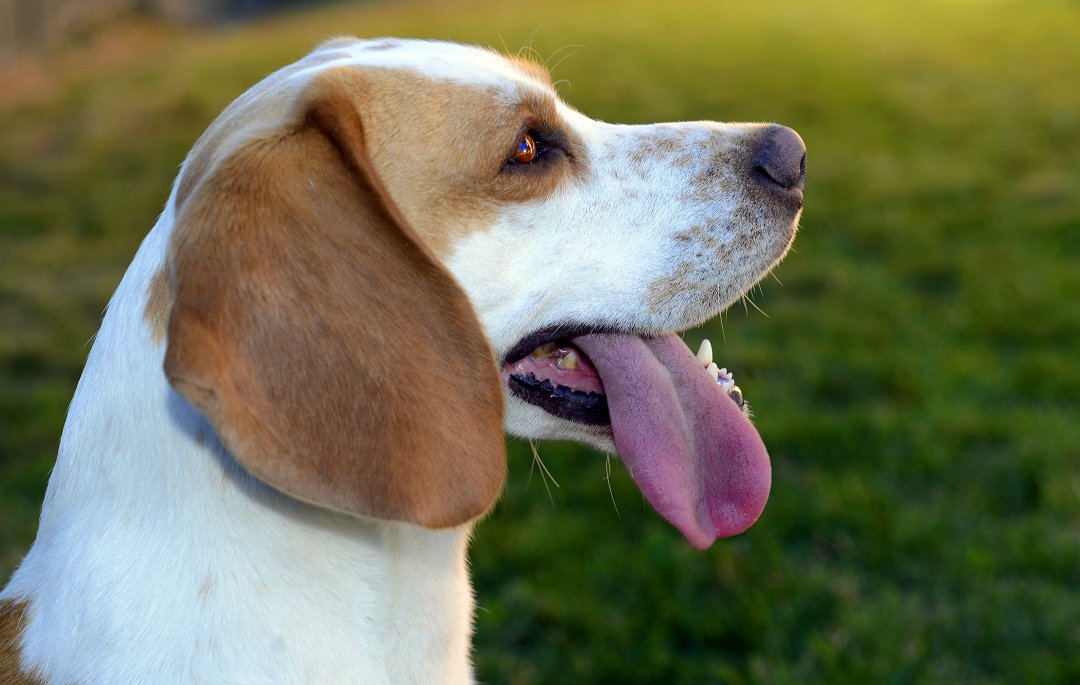Table of Contents
- 1 Introduction: Preparing Your Beagle for Spay Surgery: Essential Steps to Take
- 2 Post-Surgery Care for Beagles: Ensuring a Smooth Recovery
- 3 Long-Term Care for Your Beagle After Spay Surgery: Tips and Advice
- 4 FAQs About: How to Care for Beagle After Spay Surgery
- 4.1 Can I let my beagle lick her spay incision?
- 4.2 How should I clean my beagle’s spay wound?
- 4.3 How can I manage my beagle’s pain after spay surgery?
- 4.4 When can I resume regular activities with my beagle after spay surgery?
- 4.5 What should I feed my beagle after spay surgery?
- 4.6 When should I schedule a follow-up appointment after my beagle’s spay surgery?
Introduction: Preparing Your Beagle for Spay Surgery: Essential Steps to Take
Are you a proud beagle owner who wants to ensure a smooth recovery for your furry friend after spay surgery? Look no further! In this article, we will guide you through the essential steps to take in order to care for your beagle after spay surgery. Spaying your beagle is an important decision that can bring numerous health benefits, but it’s equally important to be prepared for the recovery process. We will cover everything from post-surgery care to long-term care, providing you with tips and advice to ensure your beagle’s well-being. So, let’s dive in and discover how to care for your beagle after spay surgery!
Spay surgery is a common procedure performed on female dogs to prevent unwanted pregnancies and reduce the risk of certain health issues. It’s crucial to prepare your beagle before the surgery to ensure a smooth process and minimize any potential complications. One of the first steps you should take is to consult with your veterinarian. They will provide you with specific instructions tailored to your beagle’s needs, such as fasting requirements and medication guidelines. It’s also important to create a comfortable and quiet recovery space for your beagle, away from other pets and distractions. By following these essential steps, you can help your beagle have a successful spay surgery and pave the way for a smooth recovery.
Now that we’ve discussed the importance of preparing your beagle for spay surgery, let’s move on to the next heading: “Post-Surgery Care for Beagles: Ensuring a Smooth Recovery.” In the following section, we will delve deeper into the steps you need to take immediately after the surgery to ensure your beagle’s well-being and promote a speedy recovery. Stay tuned for valuable tips and advice that will help you navigate this crucial phase of your beagle’s journey towards optimal health.
Post-Surgery Care for Beagles: Ensuring a Smooth Recovery
After your beagle has undergone spay surgery, it is crucial to provide proper post-surgery care to ensure a smooth and successful recovery. Here are some essential steps and tips to help you care for your beagle during this critical period:
1. Monitor the Incision Site
- Keep a close eye on the incision site to ensure it is healing properly.
- Look out for any signs of infection, such as redness, swelling, discharge, or a foul odor.
- If you notice any concerning symptoms, contact your veterinarian immediately.
2. Manage Pain and Discomfort
- Your beagle may experience some pain and discomfort after surgery.
- Follow your veterinarian’s instructions regarding pain medication to help alleviate any discomfort.
- Ensure that you administer the medication as prescribed and monitor your beagle for any adverse reactions.
3. Prevent Licking and Chewing
- Beagles are notorious for their curiosity and tendency to lick or chew at wounds.
- Prevent your beagle from licking or chewing the incision site by using a cone collar or an alternative protective device recommended by your veterinarian.
- This will help prevent infection and promote proper healing.
4. Provide a Calm and Comfortable Environment
- Create a quiet and comfortable space for your beagle to rest and recover.
- Minimize noise, activity, and stressors that could disrupt the healing process.
- Ensure that your beagle has a cozy bed, fresh water, and easy access to a litter box or outdoor area for bathroom breaks.
5. Follow Dietary Guidelines
- Your veterinarian may provide specific dietary instructions for your beagle during the recovery period.
- Follow these guidelines carefully to ensure proper nutrition and promote healing.
- Offer small, frequent meals to prevent digestive upset and monitor your beagle’s appetite.
6. Limit Physical Activity
- It is important to restrict your beagle’s physical activity during the recovery period.
- Avoid strenuous exercise, jumping, or rough play that could strain the incision site.
- Take your beagle for short, controlled walks on a leash to prevent excessive movement.
By following these post-surgery care tips, you can help your beagle have a smooth and successful recovery after spay surgery. Remember to closely monitor the incision site, manage pain and discomfort, prevent licking and chewing, provide a calm environment, follow dietary guidelines, and limit physical activity. With proper care and attention, your beagle will be back to their happy and healthy self in no time!
Next, we will discuss long-term care for your beagle after spay surgery, including tips and advice for their continued well-being.
Long-Term Care for Your Beagle After Spay Surgery: Tips and Advice
After your beagle has undergone spay surgery, it is important to provide them with proper long-term care to ensure a smooth recovery and prevent any complications. Here are some essential tips and advice on how to care for your beagle after spay surgery:
1. Monitor the Incision Carefully
- Keep a close eye on the incision site to ensure it is healing properly and free from any signs of infection.
- Look out for redness, swelling, discharge, or excessive licking around the incision area.
- If you notice any abnormalities, contact your veterinarian immediately for further guidance.
2. Follow the Veterinarian’s Instructions
- Your veterinarian will provide you with specific instructions on how to care for your beagle post-surgery.
- Follow their guidance regarding medication administration, activity restriction, diet, and any other necessary precautions.
- It is crucial to strictly adhere to these instructions to promote optimal healing and minimize the risk of complications.
3. Provide Pain Management
- Spay surgery can cause discomfort for your beagle, so it is important to manage their pain effectively.
- Your veterinarian may prescribe pain medication to alleviate any post-operative pain.
- Administer the medication as directed and monitor your beagle’s response to ensure they are comfortable.
4. Prevent Excessive Activity
- During the recovery period, it is essential to restrict your beagle’s physical activity.
- Avoid activities such as running, jumping, or strenuous play that could strain the incision site.
- Leash walks and controlled exercise are typically recommended to prevent any complications.
5. Maintain a Proper Diet
- Proper nutrition is crucial for your beagle’s recovery after spay surgery.
- Follow your veterinarian’s dietary recommendations, which may include a specific post-surgery diet or portion control.
- Ensure your beagle has access to fresh water at all times to stay hydrated.
6. Keep the Cone Collar On
- To prevent your beagle from licking or biting the incision site, it is important to keep the cone collar on as instructed by your veterinarian.
- Even if your beagle seems uncomfortable with the collar, it is necessary to prevent any potential complications from self-inflicted injuries.
7. Schedule Follow-Up Appointments
- Regular follow-up appointments with your veterinarian are crucial to monitor your beagle’s progress and address any concerns.
- These appointments allow your veterinarian to assess the healing process, remove stitches if necessary, and provide further guidance on long-term care.
By following these tips and advice, you can ensure proper long-term care for your beagle after spay surgery. Remember to consult your veterinarian for personalized instructions and guidance based on your beagle’s specific needs.
FAQs About: How to Care for Beagle After Spay Surgery
Can I let my beagle lick her spay incision?
It is important to prevent your beagle from licking her spay incision as it can introduce bacteria and delay the healing process. You can use an Elizabethan collar or a soft cone collar to prevent licking.
How should I clean my beagle’s spay wound?
It is best to follow your veterinarian’s instructions for cleaning your beagle’s spay wound. Typically, a gentle cleaning with warm water and mild soap is recommended. Avoid using any harsh chemicals or ointments without consulting your vet.
How can I manage my beagle’s pain after spay surgery?
Your veterinarian may prescribe pain medication for your beagle to manage any discomfort after spay surgery. Follow the prescribed dosage and schedule provided by your vet. Additionally, providing a quiet and comfortable space for your beagle to rest can help alleviate pain.
When can I resume regular activities with my beagle after spay surgery?
It is important to restrict your beagle’s activity level for a specific period of time recommended by your veterinarian. This typically ranges from 7 to 14 days. Avoid strenuous exercise, jumping, and rough play during this time to allow proper healing.
What should I feed my beagle after spay surgery?
Your veterinarian may provide specific dietary recommendations for your beagle’s post-surgery care. In general, it is advisable to feed your beagle small, easily digestible meals in the initial days after surgery. Gradually transition back to their regular diet as advised by your vet.
When should I schedule a follow-up appointment after my beagle’s spay surgery?
It is important to schedule a follow-up appointment with your veterinarian as recommended. This allows them to assess the healing progress, remove any stitches if necessary, and address any concerns or complications that may arise during the recovery period.






Leave a Reply